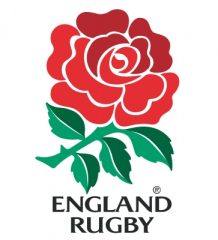Professional Game Action Plan on Player Injuries released with 2016/17 Professional Rugby Injury Surveillance Project report
The Rugby Football Union (RFU), Premiership Rugby (PRL) and the Rugby Players’ Association (RPA) have developed a new action plan to mitigate injury risk in the English professional game, following a study of the data in the 2016/17 Professional Rugby Injury Surveillance Project (PRISP) report.
The Professional Game Action Plan on Player Injuries, endorsed by the Professional Game Board (PGB), calls for the implementation of a range of linked injury prevention initiatives by game administrators, referees, coaches, conditioners, players and medical staff.
The key areas addressed in the plan are:
- Laws: For the English professional game to work collaboratively with World Rugby on an ongoing review of the laws and all injury risk, with a specific focus on reducing the incidence of concussion in the tackle and consideration of a reduction to the current legal height of the tackle.
- Law application: The PGB has commissioned analysis of referee decision making in the English professional game to determine if the increased tackle sanction brought in by World Rugby from 1 January 2017 is being consistently applied. An ongoing review of all dangerous/late tackle cards, penalties and omissions identified in the 2016/17 and 2017/18 seasons will be completed in the summer of 2018.
- Player load: Continue to work with the PGB Sports Science Advisory Group and Medical Advisory Group to advise on optimal match, training and life loads for players, as well as club squad size and composition to allow individualised player management.The PGB has already commissioned two studies in the area of player load and injury risk: a study at Cardiff Metropolitan University looking at Psychological Load began in September 2017 and a study at the University of Bath exploring the associations between training and match load and injury risk which began in September 2014. Regular updates and recommendations will be provided to the PGB.
- Training injury risk: The PGB has commissioned further analysis on the current training volumes and contact exposure in the Premiership. All data and evidence in relation to contact in training will be shared in a series of facilitated workshops and discussion with Premiership and England coaches, players and conditioners during the Summer of 2018 to seek their feedback with a view to developing greater consensus and understanding on the optimal training session content and the role that contact training and training on different surface types may have on modifying injury risk in training and matches.
- Concussion risk in the tackle: Work with World Rugby to facilitate a workshop with PRL and England coaches and players to identify technical changes which may be possible in the tackle but deliver optimised ball carrying and tackling with minimal risk of head contact.
- Resources (personnel capacity): Benchmark and audit medical, conditioning and performance resources across Premiership clubs and England representative teams to establish if sufficient personnel capacity is in place to allow for best practice management and consequently to mitigate injury risk.
- Game analysis and injury risk: Develop an additional dedicated game event analysis resource, which will be in operation for the 2018/19 season, which allows better understanding of the changes in game activity and the interaction between game events and injury risk. A PGB project group has been formed to discuss how this should be implemented and taken forward. This group will outline the aims and objectives of the game analysis function going forward and it will establish the key metrics for analysis and how they need to be coded.
- Artificial grass pitch risk in the elite game: The PGB has commissioned further independent analysis on different injury types and the relative risk of these on AGP in the elite game compared with natural turf. This will be included in the next PRISP report as part of the independent analysis led by the University of Bath.
Nigel Melville, RFU Professional Rugby Director said: “We have a responsibility to look at all elements of the game. We try and take an evidence-based view, so we have looked at the data available and made decisions, alongside PRL and the RPA, built on that which form this action plan.
“All the decisions are taken with the long term interests of the game clearly in mind and the welfare of our players is absolutely central in that regard. We know that there is no game without the players. We also know that in order to effectively mitigate against risk all stakeholders need to work together. This is why we are setting out this action plan. We want to work with the players, the professional clubs and World Rugby to build a much better body of knowledge about this, so we make better, more informed decisions.”
Phil Winstanley, Rugby Director at Premiership Rugby said: “Clearly the PRISP report has identified some significant challenges for us in relation to injury and player welfare.
“Player welfare has to and will remain at the centre of everything Premiership Rugby do as an organisation and working with the RFU and RPA we have identified immediate actions which we have to take in addition to the work that we are already doing in this area.
“It is clear though that this is not just a Premiership issue: this is also a world game issue and we look forward to engaging with World Rugby to identify solutions which benefits all.”
Richard Bryan, Rugby Director at the RPA said: “The Professional Rugby Injury Surveillance Project Report remains a vitally important piece of work. As a sport, we have a responsibility to be proactive and transparent when reporting and managing injuries. The RPA and its members welcome the introduction of the new 8-point action plan. The RPA Players’ Board recognise it as an important step that goes beyond the reporting of injuries to actively address injury concerns, protecting the interests and welfare of professional players in England.”
PRISP report
- CLICK HERE to read the PRISP report in full.
PRISP is the most comprehensive and longest-running injury surveillance study in professional rugby union and has monitored the injury risk of Premiership Rugby players in Aviva Premiership, European and national competition as well as training for the last 14 seasons.
Some key findings from the 2016/17 season include:
Overall
- The overall incidence (how often) of match injury in the Premiership was greater than the previous season and slightly higher than the average for the surveillance period. However it remains within the limits of expected season-to-season variation.
- The average severity of match injuries (the time taken to return to play) for the 2016/17 season was 32 days. This is the first time this figure has risen above the expected upper limit of season-to-season variation, largely driven by the increase in injuries in the three highest severity groupings.
- For the first time hamstring injuries and concussion appear alongside ACL injuries in the top three match injuries resulting in 84 or more days’ absence.
Concussion
- The most commonly reported match injury was concussion, contributing 22% of all match injuries.
- The mean severity of medically diagnosed match concussions in 2016-17 was 18 days. A rise from 2015/16, largely due to a substantial increase in the incidence of a relatively small number of concussions lasting greater than 84 days, compared with previous seasons. Compliance with the mandatory return to play protocols for concussion was again excellent, with no players returning to play in fewer than six days.
- The number of concussions requiring more than three months’ absence has increased.
Tackling
- 47% of all match injuries are associated with the tackle, with 23% of all injuries associated with tackling and 24% associated with being tackled.
- Concussion accounted for 19% of all injuries to the ball carrier and 43% of all injuries to the tackler, highlighting the tackle as a key game event when developing concussion reduction strategies.
- When considering all players in a tackle, there was no difference in the incidence of all injuries and concussion when comparing matches played prior to the introduction of World Rugby’s new directive regarding sanctions for high tackles, with those played after that date. Small changes were observed in the incidence of concussion to players when categorised as the ball carrier or tackler. These differences were not significant but will continue to be monitored, along with referee application of the directive, to understand the ongoing impact of the increased sanctions.
Training
- The incidence of training injuries rose during the 2016/17 season, having fallen in the two previous seasons. The average severity rose to its highest recorded level at 33 days. As a result of the increase in both incidence and severity of training injury the overall burden of training injury rose substantially for the 2016/17 season. In total, 36% of all injuries were sustained during training.
- There was a significant increase in the incidence and injury burden during full contact training. The most commonly occurring injury in these sessions was concussion. Determining training volume, intensity and activity involves balancing performance preparation with injury risk. In the 2016/17 season we saw increases in training injury burden, match injury burden and match contact injury incidence.
AGPs in professional rugby
- Importantly combining the data for the four seasons of injury surveillance that have included matches played on artificial turf indicates that neither injury incidence or severity differ between surfaces.
- For the first season, however, the incidence and burden of match injury on artificial turf in professional rugby was significantly higher than that of natural grass. The burden of injuries sustained when training on artificial turf was also higher than those sustained when training on natural grass.
- The severity of match injuries as well as the incidence or severity of training injuries on artificial turf in the elite game was not significantly different to that of natural grass. There was no significant difference in injury risk between the three artificial turf pitches (Allianz Park, Kingston Park, Sixways Stadium).
Simon Kemp, RFU Medical Services Director said: “This study continues to be critical to our understanding of injury trends in the professional game in England. Player welfare is a priority area for us and it is important that we continue to have a collaborative approach between the RFU, Premiership Rugby, RPA and World Rugby in this area. Decisions around the management of players’ needs, where possible, to be evidence-based rather than subjective, which is why this project, delivered by the University of Bath, is so important.
“Having seen the lowest-recorded incidence of injury over the surveillance period in 2015/16, the 2016/17 season’s rise suggests that the 2015/16 was an atypical year rather than a trend towards lower overall injury incidence.
“Concussion remains a priority for us all, given the continued rise in the number of reported incidences in the professional game and uncertainty about the long-term consequences. Medical staff continue to work extremely hard to ensure that this complex injury is identified and managed well.
“We have a number of innovative ongoing studies that we hope will help both better inform our understanding of concussion and also inform approaches to improve its management. These studies have demonstrated a four-fold increase in the recognition of concussive events in the English professional game since 2012 and an eight-fold reduction in the number of concussed players continuing to play following their head injury.
“Evidence based advances in management are protecting our players but we must do more. Our focus must now be on concussion prevention and addressing the risk to players in the tackle. We need to look at identifying an effective but safe tackle technique to ensure that players can consistently deliver impactful tackles, while reducing the risk of inadvertent contact with an opponent’s head, hip or knee.”
The PRISP report also provides an update on key research projects around the utility of the King-Devick assessment in identifying concussed players, artificial turf injury risk and how best to manage athletes on artificial turf and the development of elite playing talent across the game.
In addition, other live or recently completed projects include: a salivary microRNA study running in the Aviva Premiership and Greene King IPA Championship this season, research with former England international rugby players examining the possible long-term effects of the game on brain health, a separate study with former elite players looking at long-term musculoskeletal health and an innovative piece of research into the measurement and understanding of the concussion risk in the tackle in professional rugby.
First commissioned in 2002, the PRISP report not only presents its findings from last season it compares them with the previous 13 seasons in professional rugby to provide the baseline data needed to assess trends in injuries.
There is an entirely separate report from the Community Rugby Injury Surveillance Project (CRISP) – which presents annual findings from the grassroots adult game.
Related Posts
« TEAM ENGLAND WOMEN SEVENS SIDE NAMED FOR 2018 COMMONWEALTH GAMES Competition Time: Win 1 of 5 sets of 4 Tickets to watch the Bulls live »


















